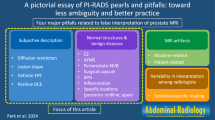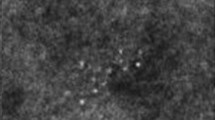Abstract
Purpose
The major drawback of conventional computed tomography (CT)-guided biopsy is the exposure of the operator to radiation during the procedure. One of the solutions to this problem is the biopsy utilizing modern robotic technology with the assistance of imaging technology.
Methods
In the design of a biopsy robot system, the structure and the size of the needle manipulator need to be optimized based on the quantitative analysis of the magnitude and pattern of the axial force applied during a biopsy. In this study, simulated biopsy experiments were conducted using the biopsy robot system previously developed at the National Cancer Center of Korea. The magnitude and the pattern of the axial forces applied to the needle insertion device located at the end of the slave arm were measured while varying the shape, diameter, and insertion angle of the biopsy needle and the specimen for biopsy.
Results
The results showed that the amount and the pattern of the axial force applied to the biopsy needle are affected by the physical properties of the biopsy specimen as well as the tip shape, diameter, and insertion angle of the needle. These results will facilitate the optimization of the required workspace, size, and weight of robot systems for robotic biopsy.
Conclusions
A quantitative analysis was performed to examine changes in the shape, diameter, and insertion angle affect the force on the biopsy needle. We found that the force applied on the needle might vary depending on the physical characteristics of the various internal organs and structures.
Similar content being viewed by others
References
Masamune K, Fichtinger G, Patriciu A, Susil RC, Taylor RH, Kavoussi LR, Anderson JH. System for robotically assisted percutaneous procedures with computed tomography guidance. Comput Aided Surg. 2001; 6:370–383.
Nagel M, Schmidt G, Petzold R, Kalender WA. A navigation system for minimally invasive CT-guided interventions. Lecture Notes Comput Sci. 2005; 3750:33–40.
Rossi A, Trevisani A, Zanotto V. Design and implementation of a mechatronic device for robot-assisted neurosurgery. IEEE Conf Control Appl. 2005:7–12.
Maurin B, Piccin O, Bayle B, Gangolff J, Mathelin M, Soler L, Gangi A. A new robotic system for CT-guided percutaneous procedures with haptic feedback. Int Congress Ser. 2004; 1268:515–520.
Long JA, Cinquin P, Troccaz J, Voros S, Berkelman P, Descotes JL, Letoublon C, Rambeaud JJ. Development of the miniaturised endoscope holder LER (light endoscope robot) for laparoscopic surgery. J Endourol. 2007; 21:911–914.
Ding J, Stoianovici D, Petrisor D, Mozer P, Avila R, Ibanez L, Tumer W, Yankelvitz D, Wilson E, Banovac F, Cleary W. Medical needle steering for lung biopsy: experimental results in tissue phantoms using a robotic needle driver. IEEE Int Conf Bioinform Biol Eng. 2008; 1–5.
Maurin B, Gangolff J, Bayle B, Mathelin M, Piccin O, Zanne P, Doignon C, Soler L, Gangi A. A parallel robotic system with force sensors for percutaneous procedures under CT-guidance. Med Imge Comput Comput Assist Interv. 2004; 3217:176–183.
Okamura AM, Simone C, O’Leary MD. Force modeling for needle insertion into soft tissue. IEEE T Bio-Med Eng 2004; 51:1707–1716.
Abolhassani N, Patel RV, Avazi F. Minimization of needle deflection in robot-assisted percutaneous therapy. Int J Med Robot Comput Assist Surg. 2007; 3:140–148.
Kim MT, Kim SH, Kim HH, Nam KW, Kim KG, Jo YH. Development of a prototype of CT-guided biopsy robot system. Korean Soc Biomed Eng; 2010.
Kataoka H, Washio T, Chinzei K, Mizuhara K, Simone C, Okamura AM. Measurement of the tip and friction force acting on a needle during penetration. Med Imge Comput Comput Assist Interv. 2002; 2488:216–223.
O’Leary MD, Simone C, Washio T, Yoshinaka K, Okamura AM. Robotic needle insertion: effects of friction and needle geometry. IEEE Int Conf Robot Automat. 2003; 2:1774–1780.
Author information
Authors and Affiliations
Corresponding author
Rights and permissions
About this article
Cite this article
Kim, M.T., Son, J., Cho, C.N. et al. Quantitative analysis of applied force on biopsy needle insertions. Biomed. Eng. Lett. 2, 249–254 (2012). https://doi.org/10.1007/s13534-012-0079-2
Received:
Revised:
Accepted:
Published:
Issue Date:
DOI: https://doi.org/10.1007/s13534-012-0079-2




